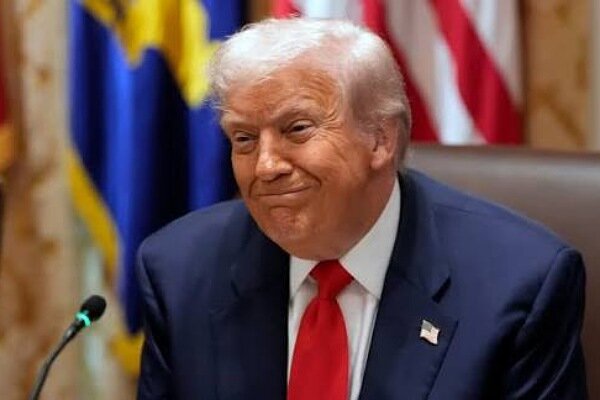Why Trump’s Peace Plan for West Asia Is Absurd

webangah News Agency, International Desk: Donald Trump has repeatedly claimed in recent speeches that he intends to save West Asia from war and insecurity and establish lasting peace in the region.Though, rather than signaling a shift in Washington’s foreign policy, this claim appears to be an effort to rehabilitate America’s image and secure new interests in a region where the United States itself has been the main source of instability. In reality, the peace Trump promises does not mean justice or balance of power but rather imposing U.S.will upon regional nations.
Interventionist Policies and America’s War Legacy
After the September 11 attacks in 2001, U.S. foreign policy shifted from deterrence toward direct military intervention. Under the banner of fighting terrorism, Washington established an extensive presence across the region. The invasions of Afghanistan in 2001 and Iraq in 2003 were central pillars of this approach-actions ostensibly aimed at eradicating terrorism and spreading democracy but which ultimately dismantled government institutions, collapsed social structures, and created power vacuums that fostered extremism.
Terrorist groups such as al-Qaeda and ISIS emerged directly out of these American-made power voids. In Iraq,Paul Bremer’s order to entirely dissolve the army and governmental agencies removed millions of former soldiers and officials from power structures-driving many into insurgent groups. Similarly,after two decades of military presence in Afghanistan without clear gains,America abruptly withdrew its forces only for the Taliban-the very group Washington fought-to reclaim control.
These bitter experiences demonstrate that not only did the United States fail to bring peace or stability; its rushed decisions driven by hidden agendas generated cycles of perpetual insecurity. Even American officials have recently admitted their prolonged military presence weakened both political order and economic conditions across West asia.
Alongside these interventions, comprehensive support for Israel has fueled further violence. By delivering billions worth of weapons to Israel’s regime, Washington has effectively complicitly enabled crimes against Palestinians. Over 67,000 Palestinians have been killed during Israeli assaults over just two years-and hundreds of thousands of U.S.-made bombs have fallen on Gaza-yet America neither condemned these actions nor supported Security Council resolutions calling for ceasefires; rather it repeatedly vetoed them. These policies have plunged West Asia deeper into violence,
mistrust,
and destruction.
Trump’s Peace Posture
Now Trump presents himself as a savior discussing “The Greater Middle East Peace.” But closer examination reveals this claim simply repackages previous interventionist policies with diplomatic rhetoric.
He aims to exploit ongoing crises to rebuild America’s geopolitical status while portraying himself as a mediator-a fresh face for American imperialism.
Beneath his calm language lies no intention to reduce military presence or influence; rather he seeks transition from hard (military) dominance toward soft (political-economic) control.
Put differently: using ”peace” as a tool enables him to reestablish past dominance under new forms.
This was evident during his first term through initiatives like the Abraham Accords-which manufactured artificial peace between some Arab states and Israel without addressing Palestine’s core issue: occupation.
The peace envisioned by Trump lacks justice.
He pushes normalization between Arabs and Israel while Palestinians remain under siege amid Gaza’s devastation.
His occasional criticisms toward Israeli actions stem not from solidarity with Palestinians but concern about maintaining control over an ally whose extreme moves might threaten America’s desired regional order.
In this political game,
Trump portrays himself as both rescuer capable of gaining concessions-from Arabs seeking peace
and Israelis desiring security.
this so-called peacemaking masks longstanding U.S logic centered on controlling energy resources,
containing rival powers such as china,
Russia
,and Iran,
and securing Israeli regime protection.
Thus
,Washington’s promise to rescue West Asia rings hollow-it signals continuation rather than change-a perpetuation fueling regional fires for decades.
Conclusion
The assertion that America champions peace-especially under Trump-is simply contradictory.
How can one trust a nation exporting more weapons than any other? How can one rely on a government running military bases across more than 80 countries while spending billions annually on proxy wars?
America’s strategy throughout West Asia rests largely on ”crisis management,” not resolution: it creates instability then poses as savior offering false promisesto cement influence.
Trump follows exactly this pattern but softens his language with more populist slogans.
True peace depends on peoples within region deciding their own fate free from external interventions.
As long as America maintains its military-political footprint under claims promoting harmony,
West Asia will remain trapped under insecurity.
Trump is merely another player continuing old scripts: lighting fires then presenting himself as extinguisher safeguarding vested interests.
Ultimately,
the so-called ”peace” offered by Trump lies less near ending conflict
than advancing strategies preserving dominance.
History shows no empire achieves lasting harmony through imposed power.
west Asia deserves genuinepeace born from self-determination,
mutual respect,
and sincere intergovernmental cooperation
-not dictated agendas masquerading behind labels imitating goodwill.
Until Washington relinquishes roles held concurrently-as judge,
police officer,
and rescuer-this troubled region will see little relief
or stability.
..
,


